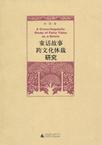童话故事跨文化体裁研究
出版时间:2009-9 出版社:广西师范大学出版社 作者:杨慧 页数:286
Tag标签:无
前言
近年来,体裁研究引起学者广泛关注,它对文本分析和语言教学实践都有重要意义。本项研究以体裁理论为基础,致力于探讨童话语料体裁分析框架的建构及应用,这一研究将是对体裁分析理论有益的补充,同时对以体裁分析为基础的语言教学实践有一定指导意义。在分析总结体裁理论不同流派特点的基础上,本项研究将特殊用途英语体裁理论和新修辞学派体裁理论相结合,认为体裁是特定社会文化语境的主要反射,是语言形式和意义的主要载体。体裁分析超越了对语篇语言特征的简单描述,寻求语篇语言特征的社会文化成因,探讨语篇建构的有效方式。根据童话故事自身的特点,体裁的社会交际性和语言本体性在童话中能够全部得以体现,本项研究提出了一个童话体裁分析框架(GenreAnalysisofFairyTales)。该框架包含三个视角:社会认知视角、语言学视角和语言教学视角。讨论童话的社会文化和认知意义为语言学视角提供了研究背景;分析童话文本的体裁结构和语言特点为语言教学视角提供了研究平台;提出童话体裁写作教学框架使本项研究的应用性落到了实处。本项研究在选取语料过程中从分类学的角度,从五个国家选取了七十五篇经典童话。在分析语料过程中采取了四重分析模式,即对童话的社会文化层次、认知层次、体裁结构层次和语言特征层次进行统计与分析。通过对经典童话全方位的体裁分析之后,本项研究诠释了童话在当代的文化意义和认知意义。
内容概要
《童话故事跨文化体裁研究》在选取语料过程中从分类学的角度,从五个国家选取了七十五篇经典童话。在分析语料过程中采取了四重分析模式,即对童话的社会文化层次、认知层次、体裁结构层次和语言特征层次进行统计与分析。通过对经典童话全方位的体裁分析之后,本项研究诠释了童话在当代的文化意义和认知意义。
作者简介
杨慧,女,1979年出生于辽宁黑山县。北京邮电大学人文学院外语系讲师。2008年毕业于清华大学外语系英语语言文学专业,获文学博士学位。主要从事的学术研究领域为:应用语言学、社会语言学、网络文化。主要开设的课程有:英语词汇学、英语文体学、高级英语、研究生英语听说。
书籍目录
Chapter Ⅰ Introduction1.1 Purposes of the study1.2 Significance of the study1.2.1 Socio-cultural significance/21.2.2 Linguistic significance/41.2.3 Pedagogical significance/51.3 Research questions1.4 Methodology and data collection1.4.1 Methodology/71.4.2 Data collection/81.4.3 Procedures/121.5 Organization of the studyChapter Ⅱ Literature Review2.1 Introduction2.2 Definition of fairy-tale text2.3 Perspectives of the fairy-tale research2.3.1 A folkloristic perspective.2.3.2 An anthropological perspective2.3.3 A psychological perspective,2.3.4 A narrative perspective2.4 Summary of the relevant studies2.4.1 Significance of socio-cognitive perspective2.4.2 Significance of linguistic perspective2.4.3 Significance of pedagogical perspectiveChapter Ⅲ Theoretical Foundations3.1 Introduction3.2 Genre and genre analysis3.2.1 Malinowski: Language as symbolic action.3.2.2 Austin: Speech act theory3.2.3 Bakhtin: Speech genre3.2.4 Marth: Functional analysis of genre3.2.5 Swales: Genre conceptions in The ESP School3.2.6 Miller: Genre theories in The New Rhetoric School3.2.7 Feez: Genre learning and teaching3.3 Summary of genre theories3.4 Constructing a generic framework for fairy tales3.4.1 Necessity of constructing a framework3.4.2 Possibility of constructing a framework3.4.3 A suggested framework: Genre analysis of fairy talesChapter Ⅳ A Socio-cultural Analysis of Fairv-tale Text 4.1 Introduction4.2 Language and cuIture4.3 Fairy tales and culture4.3.1 Fan'y tales are embedded cultural context4.3.2 Fa tales embody cultural vahes/804.4 Socio-cultural significance of fairy tales4.4.1 Introduction4.4.2 Statistics of cukural topics in fairy tales4.4.3 Analysis of cukural topics4.5 Conclusion of socio-cultural significance..Chapter Ⅴ A Cognitive Analysis of Fairy-tale Text5.1 IntrodUctlon5.2 Magic:A cognitive element in fairy tales5.3 Magic and its cognitive functions5.3.1 Introduction5.3.2 Statistics of magical representations in fairy tabs5.3.3 Analysis ofmagic5.3.4 CognRwe mechanism of magic5.4 Conclusion of cognitive significanceChapter Ⅵ A Typological Analysis of Fairy-tale Text6.1 Introduction6.2 Generic structures6.3 Statistics of generic structures of fairy tales6.3.1 Linear generic structure6.3.2 Comparative generic structure6.3.3 Mixed generic structure6.3.4 Generic structures in German faky tales6.3.5 Generic structures in Danish fairy tales,6.3.6 Generic structures in British fairy tales6.3.7 Generic structures in Chinese fairy tales6.3.8 Generic structures in Japanese fairy tales6.4 Conclusion of generic structuresChapter Ⅶ A Linguistic Analysis of Fairy-tale Text7.1 Introduction7.2 Linguistic features7.3 Discourse connectives7.3.1 Introduction7.3.2 Statistics of discourse connectives in fah-y tales7.3.3 Analysis of discourse connectives7.4 Attitude markers7.4.1 Introduction7.4.2 Statistics of attitude markers in fairy tales……Chapter Ⅷ A TEFL A nalysis of Fairy-tale TextChapter Ⅸ Conclusions
章节摘录
插图:Studies show that even advanced learners with a high proficiency ofEnglish language have problems with written discourse at the level of textorganization (Dudley-Evans, 1995; Johns, 1995; Prior, 1995). Englishwriting is difficult. A learner today needs to know not only how to writea specific genre but also what to write and how to write in differentwriting scenes. Learning to write successfully is a complex and lifelongprocess, where writing and reading skills continue to develop adulthoodthrough the interiorization of language tools and systems in various con-texts (Vygostsky & Luria, 1994). Several studies show that an essentialpart of writing success depends on understanding the nature of writtendiscourse, and experienced writers and readers come to see texts as rhe-torically based actions within specific contexts, within social and culturalstructures (Berkenkotter, Huckin & Ackerman, 1988; Haas, 1994; Gei-sler, 1994). It is more and more apparent that learners need to learn howto think in order to have creativity in different writing scenes. How tothink and how to write are equally important points (Yang Yonglin,2004). The cultivation of an individual's creativity requires their interestsand motivations. No doubt, almost everybody likes fairy tales, why is thisso? Fairy tales have attracting plots, moving stories, and aesthetic ormoral themes, and they can awaken the imagination and soften the heartsof people. Therefore, fairy tales might be a good starting point for genre-writing teaching.
编辑推荐
《童话故事跨文化体裁研究》由广西师范大学出版社出版。
图书封面
图书标签Tags
无
评论、评分、阅读与下载
